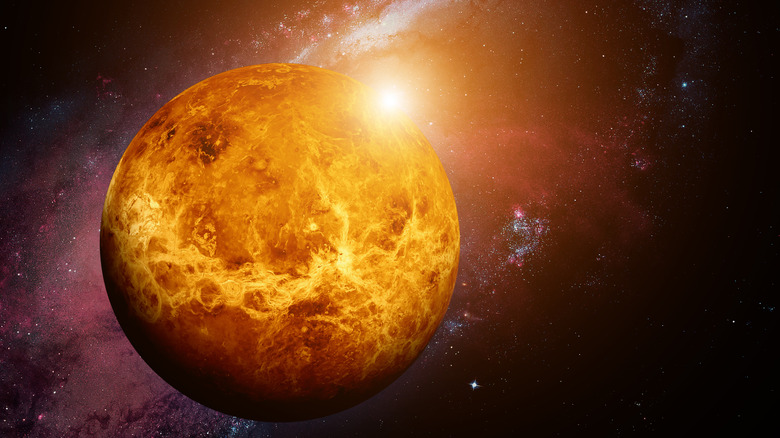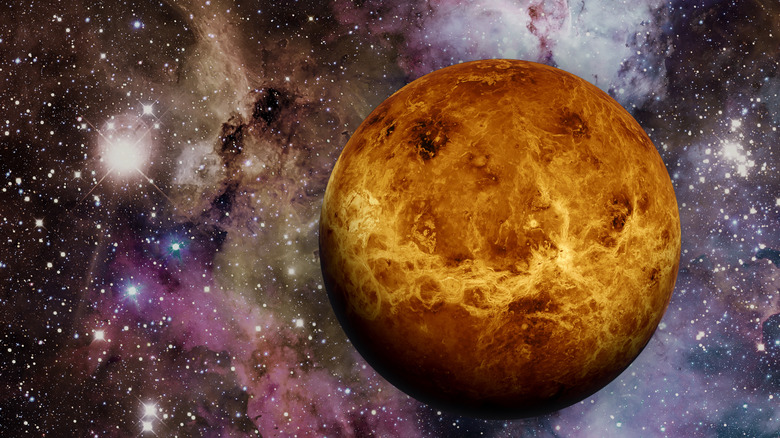Venus Has An Unusual Number Of Moons (& The Sun Might Be To Blame)
As the second planet from the Sun, Venus is one of the brightest orbs you can see from our world and the closest planet in our solar system to Earth. While its mass and size make it Earth's twin, Venus differs in the number of moons it has — zero. That's right. Like Mercury, the planet doesn't have any moons, but that's not the whole story.
Rather than a moon, Venus has a quasi-satellite or quasi-moon. While a traditional moon orbits a planet, a quasi-satellite stays close to a planet while orbiting the Sun. In this case, it has a more oblong orbit than Venus, which doesn't exert enough gravity to hold the asteroid in its own orbit. Although the planet's gravitational influence affects the stability of the quasi-moon, the orbit is so complex and unstable that the gravitational factors of other objects in space will pull it away within about 500 years, at which point it will lose its quasi-satellite status.
Named Zoozve, Venus' quasi-moon is the first of its kind to be discovered orbiting the Sun near a major planet and has most likely been its companion for at least 7,000 years. It was discovered at the Lowell Observatory Near-Earth-Object Search in Arizona by research scientist Brian Skiff in 2002, back when it was just called 2002VE68. Scientists estimate that it's between 660 feet and 1,640 feet in diameter based on its brightness.
Why Venus doesn't have any moons
Considering how the Earth's moon came to be — a barrage of solar system debris — and the fact that Venus is often the closest planet to Earth, questions have been raised about how Venus escaped a similar event and doesn't have a moon. While Mercury doesn't have a moon, the reason is simply because it's too close to the Sun for its gravitational field to be strong enough to hold anything in its orbit. It has largely been accepted that Venus doesn't have a moon for the same reason. However, it's farther away from the sun and has a similar mass to Earth, so its gravitational pull could affect a nearby asteroid at least for a while — as seen with Zoozve.
These questions were answered in 2006 when scientific models suggested that Venus used to have a moon. The planet didn't escape the solar system debris and was actually hit twice. In the first barrage, which happened early in its life, the planet was hit by matter large enough to form a moon. About 10 million years later, Venus was hit again in such a significant impact that it changed the planet's direction. As a result of the force and tidal events, the moon and planet collided, merging together. Also, this model gave scientists an explanation why Venus spins backward – and why it rotates so slowly compared to most of the other planets.

